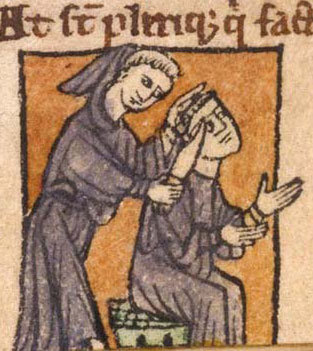From
Shaving Made Easy, a book in the public domain I like to recommend to shavers new and old:
Next to the razor, the most important article of the shaving outfit is the soap. In its proper use lies the real secret of easy shaving. The razor may be ever so good, but unless the beard is properly lathered with a good soap, shaving will be anything but a pleasure. Use only a regular recognized standard make of shaving soap, not, under any circumstances, a toilet soap. The latter is not intended for shaving, and is likely to produce irritations of the skin and leave the face rough and sore.
A wrong idea prevails regarding the use of the soap. The popular impression is that the soap is used for the purpose of softening the beard, in which condition it is supposed to be most easily cut. This is a mistake. The soap is used, not to soften the beard, but to produce exactly the opposite effect—namely, to make the hair stiff and brittle, so that they will present a firm and resisting surface to the razor. A hair, as is well known, is a tube composed of a hard fibrous substance, growing from a bulb or root, which secretes an oily matter. This oil works its way up through the hair, and by permeating all parts, renders the hair soft and pliable. Now in this natural oily condition, it is very difficult to cut the hair with a razor, and it becomes even more difficult if the beard be made still softer by the application of hot water. Many do this, and it is no wonder they find shaving difficult. When this is done, the hairs become soft and limp, and the razor will either slip over them entirely, or else cut partly into them, bend them back and slice them lengthwise, all the while pulling and straining them at the roots, and making the process of shaving most painful. Now soap has the opposite effect. It contains either alkali, potash or soda, which when applied to the beard in the form of lather, unites with the oil of the hair, neutralizing it and removing it, and renders the hairs hard stiff and brittle—in which condition they may be easily and readily cut. For the sake of cleanliness, the face should, of course, be washed previous to shaving in order to remove any dirt or grit from the beard, which might dull the razor; but before applying the lather, the face should be well dried with a towel.
Like this:
Like Loading...



